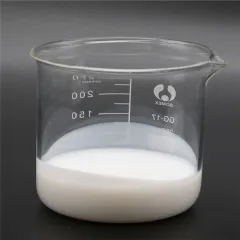If you are looking for high-quality products, please feel free to contact us and send an inquiry, email: brad@ihpa.net
Typically used ingredients in plastic color matching consist of dispersants, lubricating substances, diffusion oils, coupling agents, compatibilizers, etc. Generally come across material additives consist of flame resistants, toughening agents, brighteners, UV preventions, anti-oxidants, antibacterial agents, antistatic agents, etc. The most usual ones are fillers for cost decrease or physical modification, such as light calcium carbonate, hefty calcium carbonate, talc, mica, kaolin, silica, titanium dioxide, red mud, fly ash, diatomaceous earth, wollastonite, glass grains, barium sulfate, calcium sulfate, and so on, along with organic fillers, such as timber flour, corn starch, and other farming and forestry by-products. Filling up and strengthening materials include glass fiber, carbon fiber, asbestos fiber, artificial natural fiber, etc
Expect the above additives are added to the product’s resources. Because instance, they should be included in the material basic materials in the exact same percentage in the color-matching proofing so as not to generate a shade distinction in the subsequent production.
(Additives for Plastic Color Matching)
Dispersant
Dispersant types include fatty acid polyurea, hydroxy stearate, polyurethane, oligomeric soap, etc
Presently, the commonly utilized dispersant in the sector is lubricant. Lubricating substances have great dispersibility and can also improve the fluidity and demolding efficiency of plastics during molding.
Lubricants are separated right into interior lubes and external lubricants. Interior lubricating substances have a certain compatibility with materials, which can reduce the cohesion in between resin molecular chains, reduce melt viscosity, and boost fluidity. Exterior lubes have bad compatibility with resins. They follow the surface of molten materials to create a lubricating molecular layer, thereby minimizing the friction in between materials and processing equipment.
Lubricants
According to the chemical structure, they are mainly split right into hydrocarbons, steel soaps, lubricating substances that play a demolding duty, fatty acids, fat amides, and esters.
Such as plastic bis ceramide (EBS)
EBS (Ethylene Bis Stearamide), additionally known as plastic bis stearamide, is an extremely effective interior and outside lubricant and dispersant extensively made use of in the plastic processing market. It is suitable for all polycarbonate and thermosetting plastics, including but not limited to polyethylene (PE), polypropylene (PP), polystyrene (PS), polycarbonate (PC), polyamide (PA), polyester (PET/PBT), polyurethane (PU), phenolic material, epoxy resin, etc. Here are some of the main duties of EBS in these plastics:
(EBS Ethylene Bis Stearamide Emulsion)
Diffusion
As a dispersant, EBS can help uniformly disperse fillers and pigments throughout plastic processing, avoid load, and enhance the dispersion and stability of pigments and fillers. This assists boost the shade uniformity and mechanical residential or commercial properties of the final product. For instance, in masterbatch production, EBS can make certain that pigment bits are equally dispersed in the provider resin so that regular shade is shown in succeeding plastic items.
Internal lubrication
In the plastic melt, EBS can minimize the rubbing in between molecules and the shear anxiety of the plastic thaw, therefore lowering the thaw thickness and making the thaw circulation smoother. This helps reduce stress throughout extrusion or shot molding, lowers handling temperatures, and shortens molding cycles, while also reducing power consumption, boosting handling effectiveness, and improving the life span of devices.
Exterior lubrication
EBS creates a thin lubricating movie on the plastic surface, which can lower the rubbing in between the plastic thaw and the metal mold and mildew, enhance demolding efficiency, and stop sticking of plastic products during molding. This not just aids to enhance the surface coating of the product and decrease defects but also simplifies the post-processing procedure and enhances production effectiveness.
Other functions
In addition to the above main functions, EBS can likewise be made use of as an antistatic representative to boost the antistatic homes of plastic items and minimize issues such as dust adsorption brought on by fixed electrical power. In some applications, EBS can additionally improve the weather resistance and chemical resistance of plastic products.
In the injection molding procedure, when dry tinting is used, surface treatment agents such as white mineral oil and diffusion oil are normally added throughout blending to play the role of adsorption, lubrication, diffusion, and demolding. When adjusting the color, it should likewise be included in the raw materials in proportion. First, add the surface area treatment representative and drink well, after that add the shade powder and shake well.
When choosing, the temperature level resistance of the dispersant must be determined according to the molding temperature of the plastic raw material. From a cost perspective, in concept, if a tool and low-temperature dispersant can be made use of, a high-temperature resistant one ought to not be picked. High-temperature dispersants need to be resistant to more than 250 ° C.
Vendor of EBS Ethylene Bis Stearamide Solution
TRUNNANO is a supplier of 3D Printing Materials with over 12 years experience in nano-building energy conservation and nanotechnology development. It accepts payment via Credit Card, T/T, West Union and Paypal. Trunnano will ship the goods to customers overseas through FedEx, DHL, by air, or by sea. If you want to know more about EBS Emulsion, please feel free to contact us and send an inquiry.
Inquiry us

